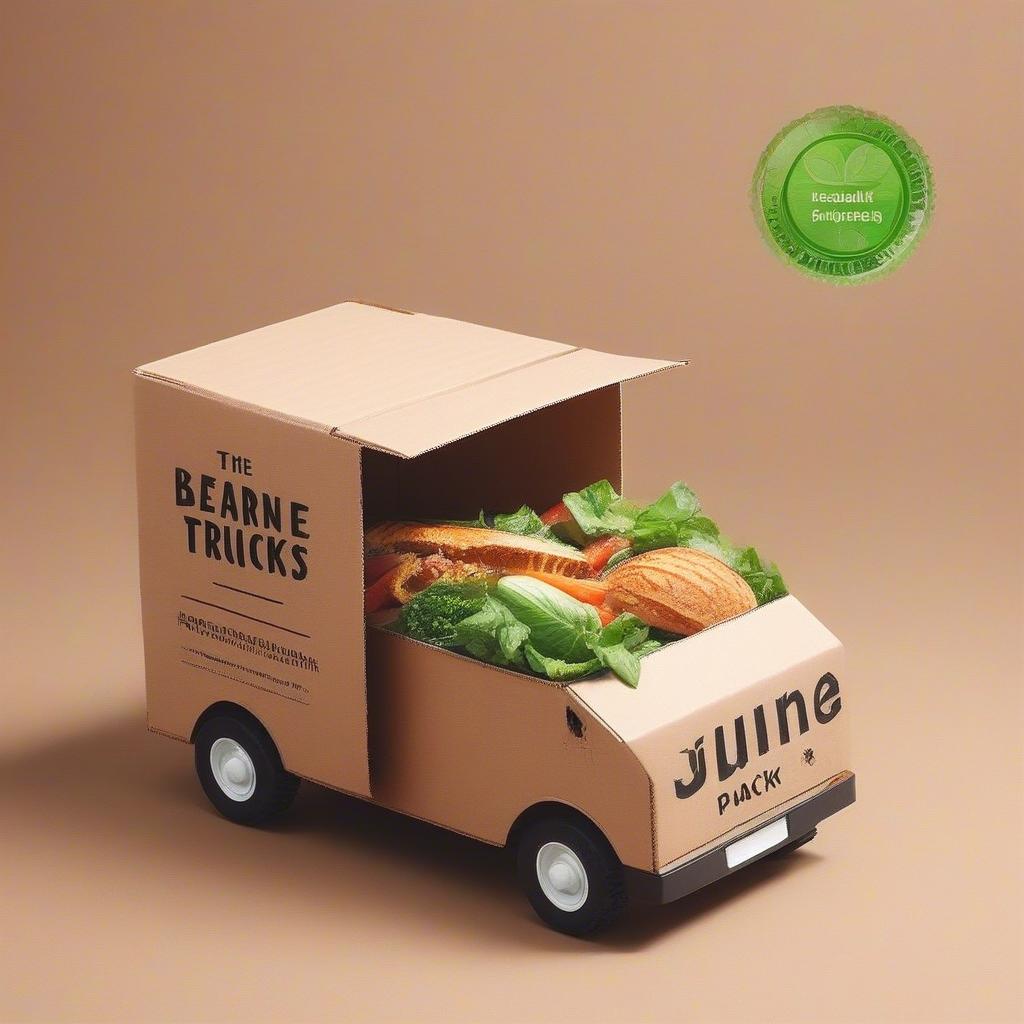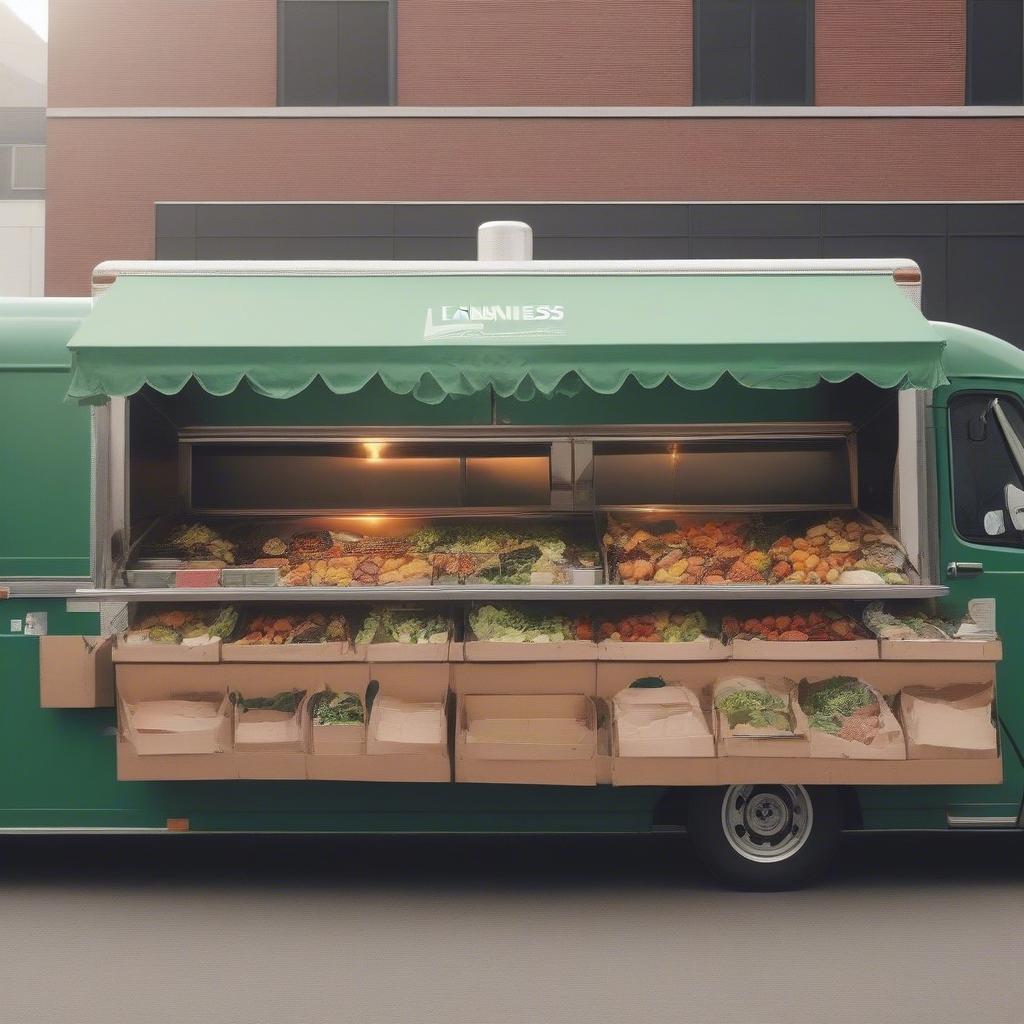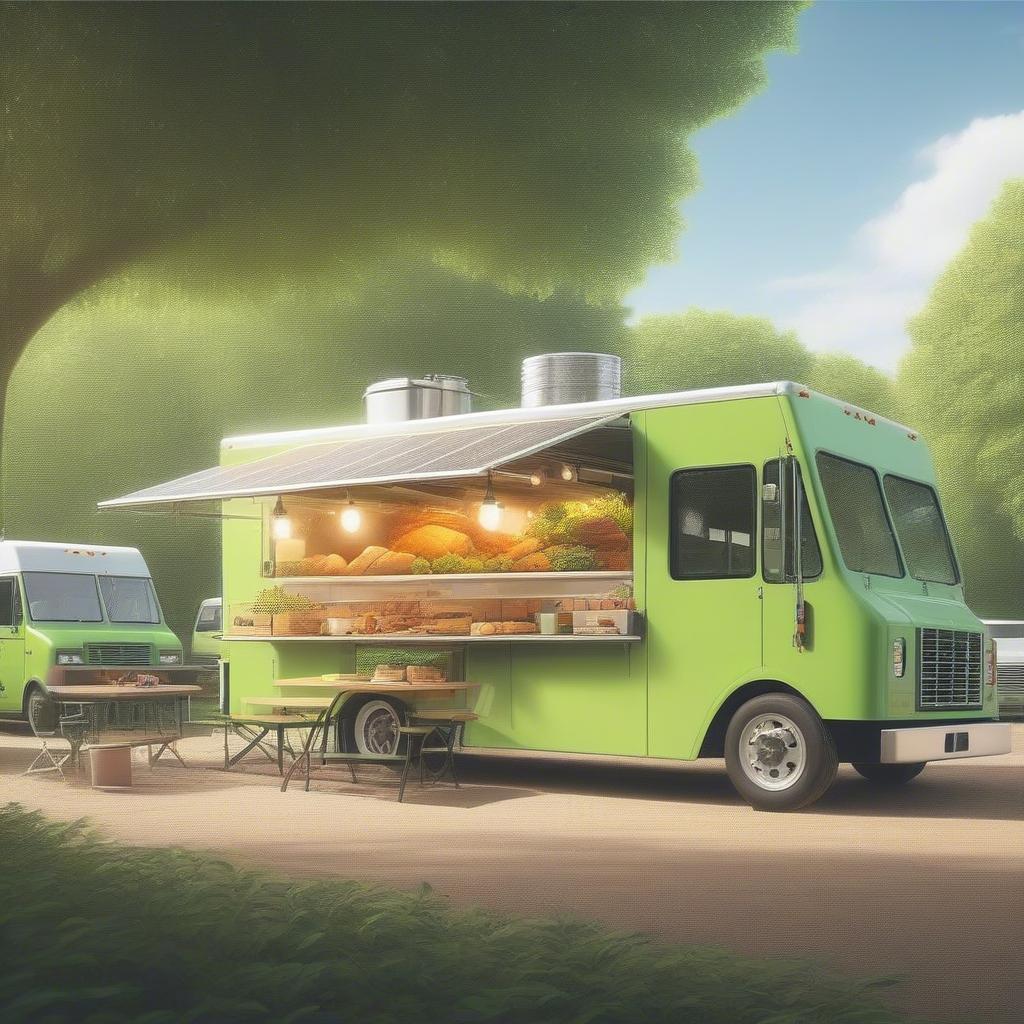
Dreaming of slinging delicious eats from your own mobile kitchen? The idea of owning a food truck is exciting, and the good news is, you don’t need years to make it a reality. With careful planning and focused action, you can launch your food truck business in less than three months. This startup guide provides a clear roadmap, offering quick tips and actionable strategies to get you on the road to success. Let’s dive in!
Phase 1: The Pre-Launch Sprint (Weeks 1-4) – Laying the Foundation
This first phase is all about building the foundation for your business. You’ll be focusing on research, planning, and making some crucial decisions. It’s the time to get crystal clear on your concept.
1.1 Nail Your Concept: What’s Your Culinary Calling?
Before you even think about trucks, you need to define what you’re selling. Don’t just jump on the latest trend. Ask yourself:
- What kind of food am I passionate about? Passion is key to longevity and success in the food industry. If you love it, you’ll be more motivated to power through the challenges.
- Who is my ideal customer? Are you targeting busy office workers, families, college students, or a more gourmet crowd? Knowing your audience will help shape your menu and marketing strategy.
- What makes my food unique? In a sea of food trucks, what will make yours stand out? Is it a unique flavor profile, a special cooking technique, or locally sourced ingredients?
- What kind of pricing will work? Consider your target market, your costs, and what competitors are charging. Price too high, and you’ll lose customers. Too low, and you’ll struggle to make a profit.
Example: Instead of just saying “I’ll sell burgers”, consider “I’ll sell gourmet, locally-sourced burgers with unique toppings, targeting young professionals in urban areas, at an average price of $12 per burger.”
Quick Tip: Research your local competition. See what they are doing well (and not so well) and identify opportunities to differentiate your offering.
1.2 Crafting a Solid Business Plan: The Roadmap to Success
A business plan is not just for investors. It’s your guide, your compass, and your reality check. Key components of your food truck business plan should include:
- Executive Summary: A brief overview of your business concept, target market, and goals. Think of it as an elevator pitch that captures the essence of your business.
- Company Description: Describe your business structure (sole proprietorship, LLC, etc.) and your brand vision. What is the personality and values of your food truck?
- Market Analysis: Research your target market, competition, and industry trends. What’s the demand for your food type?
- Menu and Pricing: A detailed breakdown of your menu items, ingredients, and pricing strategy.
- Marketing and Sales Strategy: Outline how you will attract customers and manage sales.
- Management Team: Who are the people behind your food truck, and what are their roles and experience?
- Financial Projections: Detailed financial estimates including startup costs, operating expenses, and projected revenue.
Actionable Strategy: Use online templates or software to help structure your business plan. A strong financial projection will be needed if you require financing.
Quick Tip: Be realistic about your financial projections. Don’t underestimate your expenses, and be conservative with your revenue estimates.
1.3 Securing Financing: Fueling Your Dream
Launching your food truck requires investment. Consider these options for funding your venture:
- Personal Savings: The most common starting point. Be honest about how much you can realistically invest.
- Loans: Consider bank loans, small business loans, or loans from friends and family. Prepare a solid business plan to show lenders.
- Investors: If your concept is strong, you might be able to attract investors.
- Crowdfunding: Platforms like Kickstarter or GoFundMe can be a great way to raise funds while also building community awareness.
Example: Create a budget outlining costs for a truck, equipment, licenses, permits, initial inventory, marketing, and operational expenses.
Quick Tip: Shop around for the best interest rates and loan terms.
1.4 Legal Essentials: Don’t Skip the Fine Print
Don’t let legal hurdles slow you down. Ensure you have all your bases covered:
- Business Structure: Choose the right business structure (sole proprietorship, LLC, etc.). Each has different legal and tax implications.
- Business Licenses and Permits: You will need permits to operate a food truck, including local health permits, business licenses, and food handler permits. Check with your city, county, and state for specific requirements.
- Insurance: You’ll need liability insurance to cover potential accidents or damages and workers compensation if you have employees.
- Parking Regulations: Research where you are legally allowed to operate your truck.
Actionable Strategy: Consult with a lawyer or business advisor to make sure you have all legal requirements met.
Quick Tip: It is generally easier to set up an LLC than a Corporation and it may be the perfect fit for your food truck startup guide.
Phase 2: The Operational Build-Up (Weeks 5-8) – Getting Ready to Roll
Now, it’s time to focus on the tangible aspects of your business – the truck, the equipment, and everything you need to make and serve your amazing food.
2.1 Finding and Securing Your Food Truck: The Heart of Your Operation
This is one of the most significant decisions. You can either buy a new or used truck, or lease one. Here’s what to consider:
- Budget: Set a clear budget and stick to it. Truck costs can vary greatly depending on age, condition, and features.
- Size and Layout: Consider the space you need for cooking, storage, and staff.
- Condition: A used truck can be more affordable, but make sure to thoroughly inspect its condition, including the engine, generator, and cooking equipment. Consider a pre-purchase inspection by a qualified mechanic.
- Customization: Do you need to make any modifications to the truck to fit your specific needs? Budget this in advance.
- Leasing vs. Buying: Leasing can be an option for lower upfront costs. Consider the long term costs and responsibilities associated with each option.
Example: Before purchasing, identify all of the internal systems and make sure they are compatible with the type of food you are preparing.
Quick Tip: Check out online marketplaces, food truck dealers, and local classifieds. Don’t rush the process; take your time and compare options carefully.
2.2 Equipping Your Kitchen on Wheels: Essential Tools for Success
Gather your cooking equipment, and think practically:
- Cooking Equipment: Choose the appropriate grills, fryers, ovens, or other cooking equipment based on your menu. Buy high-quality equipment to handle daily use.
- Refrigeration: You’ll need reliable refrigeration units to keep your ingredients fresh and safe.
- Food Prep Tools: Don’t forget knives, cutting boards, mixing bowls, and all the essential tools to prep your ingredients.
- Serving Supplies: Stock up on plates, cups, utensils, napkins, and other items necessary for serving your customers.
- Point-of-Sale System (POS): Invest in a reliable POS system for easy payment processing and sales tracking.
Actionable Strategy: Create a checklist of everything you need and buy in bulk where possible to save money.
Quick Tip: Buy used equipment to save money, but ensure it is in good working order and meets local health codes.
2.3 Building Your Menu: Delicious and Profitable
Your menu is your calling card. It should be delicious, profitable, and aligned with your brand.
- Menu Development: Start with a limited menu focusing on your best dishes. You can always expand later.
- Cost Analysis: Calculate the cost of each dish including ingredients and labor. Pricing should cover all expenses and yield a profit.
- Ingredient Sourcing: Establish relationships with reliable local suppliers.
- Menu Presentation: Design an attractive and easy-to-read menu.
Example: Use clear descriptions of the dish ingredients and indicate any allergens.
Quick Tip: Test your menu with friends and family and get feedback before finalizing it.
2.4 Assembling Your Dream Team: Finding the Right Crew
If you plan to have staff, choose people who are reliable, hardworking, and passionate about food and customer service.
- Hiring: Create clear job descriptions and conduct thorough interviews.
- Training: Provide thorough training on food handling, customer service, and your POS system.
- Scheduling: Plan employee schedules based on your operating hours.
- Culture: Create a positive work environment that encourages teamwork.
Actionable Strategy: Use online job boards and local networks to find qualified candidates.
Quick Tip: Don’t underestimate the importance of a happy and efficient team. Treat them well!
Phase 3: The Launch and Beyond (Weeks 9-12) – Taking Your Food Truck to the Streets
The moment you’ve been working so hard for. This phase is about getting your food truck ready for launch and focusing on long-term growth and success.
3.1 Marketing and Promotion: Spreading the Word
Getting your first customers is important. You can’t just park and wait for them. You need a solid marketing plan:
- Branding: Develop a memorable brand name, logo, and color scheme. This will help with recognition and building a brand personality.
- Social Media: Create social media profiles and post regularly. Share photos of your food, behind-the-scenes glimpses, and your location schedule.
- Local Partnerships: Partner with local businesses or events. Collaborate with local groups for community outreach.
- Launch Event: Create buzz by hosting a launch event. Offer grand opening specials to attract customers.
- Website: Set up a website with your menu, location, schedule, and contact info.
- Loyalty Programs: Create customer loyalty programs that reward your repeat customers.
Example: Utilize local food blogger’s to help raise awareness of your delicious offerings.
Quick Tip: Track your marketing efforts to see what’s working and adjust your strategy accordingly.
3.2 Soft Launch: Test the Waters Before the Big Splash
Before going full throttle, test your operations with a soft launch.
- Limited Operations: Start with a limited menu and limited operating hours.
- Gather Feedback: Ask for feedback from your initial customers and make necessary adjustments.
- Streamline Processes: Make sure your team is efficient, and identify areas for improvement.
Actionable Strategy: Invite friends and family to your soft launch for a trial run. Be open to feedback and make changes before your official launch.
Quick Tip: It is better to catch any issues early than on your launch day when there is more pressure.
3.3 Grand Opening: Your Official Debut
Your grand opening is your chance to make a big impression.
- Promote Heavily: Announce your launch date on social media and through other channels.
- Special Offers: Offer discounts and special promotions to attract customers.
- Create a Buzz: Make your grand opening fun and memorable. Consider live music or games.
Example: Offer a special discount for the first 100 customers.
Quick Tip: Have plenty of staff on hand to handle the anticipated crowds.
3.4 Location, Location, Location: Finding the Sweet Spot
Finding the right locations for your food truck is crucial. Consider:
- High Traffic Areas: Look for locations with high foot or vehicle traffic.
- Events: Secure spots at local events, festivals, and farmers markets.
- Permits: Check local regulations to ensure you can legally operate in your chosen locations.
- Time of Day: Consider when and where you will have the best traffic.
Actionable Strategy: Research your target locations and visit them during peak hours. Identify where your customers are.
Quick Tip: Cultivate good relationships with location owners or managers.
3.5 Tracking Your Progress: Staying on Course
Track your sales, costs, and customer feedback. Use this data to make informed decisions about your menu, pricing, and marketing efforts.
- Sales Data: Monitor your daily sales and identify your best-selling items.
- Expense Tracking: Keep track of all your expenses and identify areas where you can save money.
- Customer Feedback: Pay attention to customer feedback and make adjustments accordingly.
- Performance Evaluation: Evaluate your performance on a regular basis and make changes as necessary.
Example: Utilize your POS system to review your data and identify trends.
Quick Tip: Don’t be afraid to adapt your strategy as you learn more about your customers and the market.
How Learn Business Supports Your Food Truck Dream
At Learn Business, we understand the challenges of starting a new venture. That’s why we’re dedicated to providing entrepreneurs with the guidance and resources they need to succeed. We can support your food truck business in the following ways:
- Comprehensive Business Plan Templates: We provide a variety of business plan templates tailored to various industries, including food trucks. Our templates will help you organize your ideas, create a professional business plan, and project your costs.
- Financial Planning Tools: We can help you forecast your income and expenses and determine the pricing required for your menu items to ensure profitability.
- Marketing Strategies: Learn the latest strategies to market your business and gain the exposure you need to succeed. Our strategies will help you build your brand and attract customers.
- Legal and Compliance Resources: We can help you navigate the legal landscape of owning a food truck and make sure your venture stays compliant with all applicable regulations.
- Expert Support: Access to consultants and experts who understand the intricacies of launching a food truck business.
Actionable Strategy: Sign up for a free trial of Learn Business and see how we can help you.
Quick Tip: Take advantage of all the resources offered to make sure you are completely prepared for success.
Conclusion: It’s Time to Hit the Road!
Launching your food truck in less than three months is ambitious, but with a strong plan, dedication, and focused action, it’s absolutely achievable. This startup guide provides a roadmap, and with Learn Business by your side, you’ll have the guidance and resources you need to make your culinary dreams a reality. Get started today, and get ready to serve up some deliciousness! Don’t forget, by using these quick tips you will put yourself in a position to succeed. Remember: the journey of a thousand miles begins with a single step – and your first step is to begin. The road to your food truck success starts now!



Leave a Reply